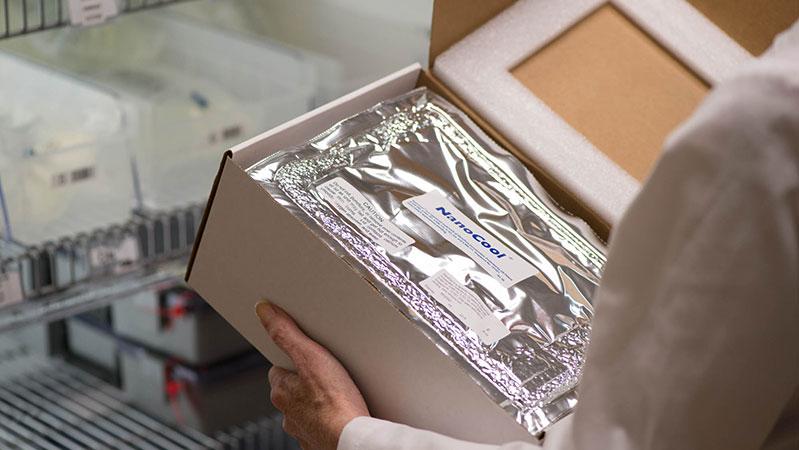Cold Chain Logistics Deliver Medical Innovations

Many healthcare products are derived from biologic products or other components that make them highly susceptible to damage from heat, not to mention light exposure and unsafe handling. In recent decades, significant advances in cell therapy, tissue-based products, transplant medicine and biopharmaceuticals have created new treatment alternatives for patients, but ensuring they reach those patients in a viable state demands innovation in cold chain systems.
Within the next few years, temperature-sensitive biopharmaceutical products such as biologics, drugs, vaccines, and blood products are expected to be used at approximately twice the rate of other pharmaceutical products. Although these products are becoming increasingly used, their high cost and specialized storage and transportation requirements demands that every stage of their supply chain be monitored for temperature, light exposure, humidity, movement, and theft. To meet these needs, healthcare products companies, providers and logistic companies must work together to provide a seamless and transparent system focused on these products.
The growing biopharma market demands cold chain solutions
According to the International Trade Administration (ITA), a bureau within the U.S. Department of Commerce, approximately $260 billion worth of biopharmaceutical products sold every year are dependent on cold chain logistics and their ability to ensure product efficacy upon delivery. A large portion of cold chain pharmaceutical products are in the experimental and clinical trial phase, requiring stringent temperature and delivery parameters. The continued development of new drugs as well as the increased adoption of cold chain products in developing markets is driving significant growth in the industry. According to an article by Pharmaceutical Commerce, of the top 50 global drug products in 2013, approximately half of them required a cold chain, with their sales totaling $104 billion.
Specialized needs for specialized products
Supporting a healthcare products cold chain requires a significant investment in specialized facilities, vehicles, packaging and monitoring technologies. In addition, logistics and transportation providers in the field must have trained staff and protocols in place for managing the more complex operations as well as compliance inspections to decrease the risk of damage.
These cold chain providers must be able to offer temperature-controlled shipping containers, refrigerated transportation and warehousing, specially trained personnel, and operational, shipping and regulatory documentation. The most advanced transportation vehicles and packaging also feature on-board sensors and recorders that are able to transmit data about the status of the product in real time. Continuous product monitoring increases security, transparency and visibility in the supply chain for manufacturing and shipping companies.
Contingency planning is a critical supply chain element
Even more than for non-temperature-sensitive items, products moving through a cold chain face more risks because an unexpected event can damage them in transit. Insufficient infrastructure, poor packaging, untrained personnel, extreme weather conditions, and long wait times when clearing customs can all have an impact. Products that are temperature-sensitive are by nature likewise time-sensitive. When managing a cold chain, logistics providers must anticipate not only when a product ships, but when it will also be received at the destination. The product must be temperature controlled throughout the entire process, even accounting for time a product may sit on the airport tarmac due to weather delays or stuck in customs due to customs and regulatory issues. Contingency planning is a critical component of cold chain logistics and experienced providers are better equipped to anticipate and plan for these issues based on their experience.
Serving a global market
There is a growing desire among governments, NGOs and industry to improve access to healthcare across the globe. Often, one of the major limiting factors to extending modern medicine to underserved areas is lack of refrigerated transportation and storage. Creating a global cold chain network is complex. Aside from the obvious hurdle of ensuring safety, security and timeliness across great distances, there are often country-specific regulations that must be adhered to. These regulations are often higher for the types of biologically based products moving through a cold chain. Planning for local environmental and weather conditions combined with the need for accurately estimating the time of clearance for country-specific government regulations can mean the difference between whether or not a patient receives a life-saving treatment. Regulatory professionals in qualified supply chain partners are constantly updating their auditing standards and upgrading technologies to ensure product safety and sterility at every stage. Transportation and logistics providers that are able to anticipate and adapt to these constantly changing forces are critical to helping healthcare products companies bring their innovations to a global marketplace.

